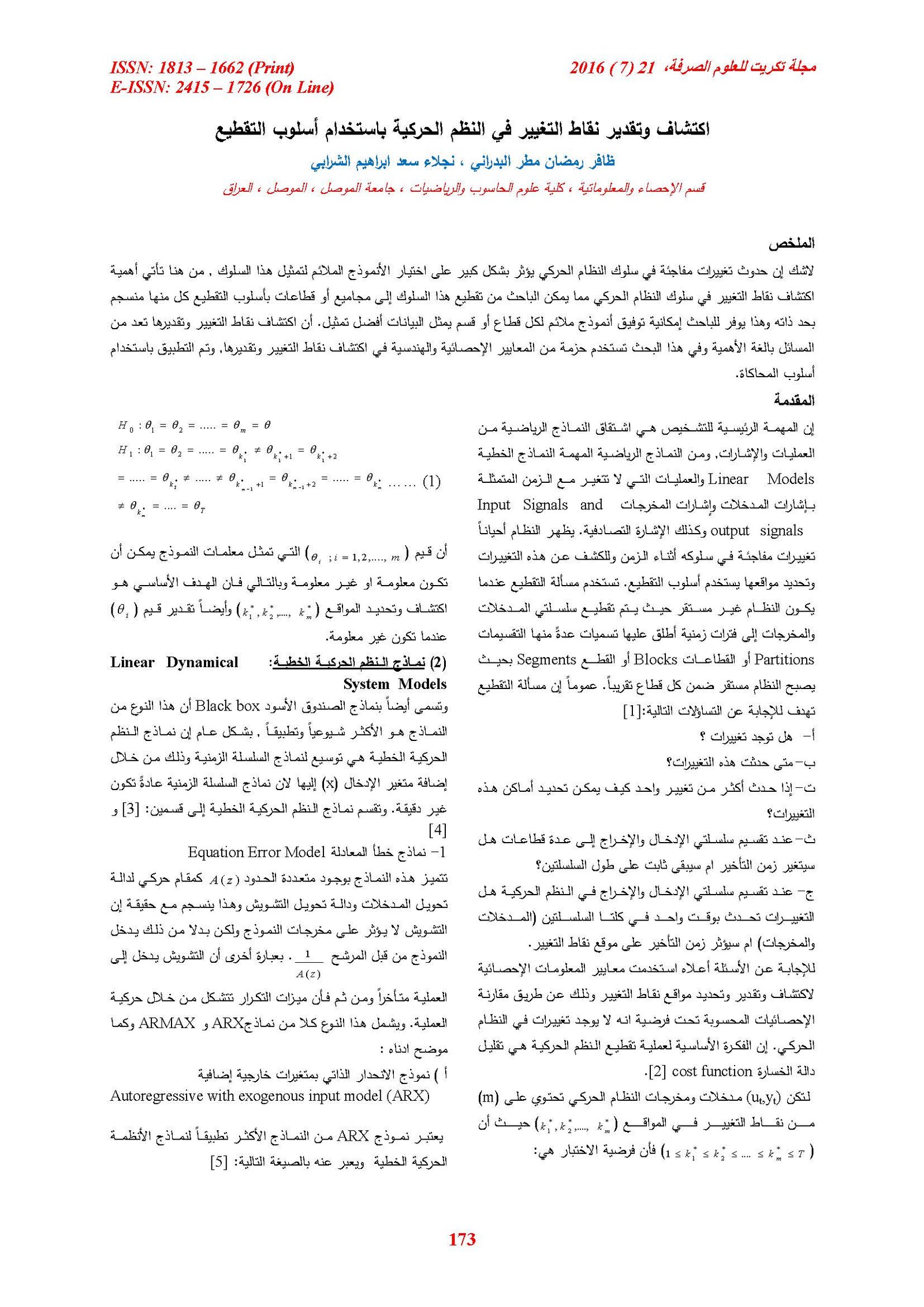Detecting and Estimation Change-point in Dynamic Systems using Segmentation Technique
Main Article Content
Abstract
There is no doubt that the sudden changes in dynamic behavior of the system greatly influences the choice of the appropriate model to represent this behavior, From here comes the importance of the discovery points that change in dynamic behavior of the system, Enabling the researcher of this behavior to segmentation it to groups or sectors in a manner cutting each line itself and this provides the Researcher the possibility of fitting appropriate model for each sector or department represents the best representation of the data. Discovery points of changing and estimation it is one of the critical issues, and in this research we use package of statistical and engineering criterion used in the discovery and estimation of the change points. The application by used simulation data.
Article Details

This work is licensed under a Creative Commons Attribution 4.0 International License.
Tikrit Journal of Pure Science is licensed under the Creative Commons Attribution 4.0 International License, which allows users to copy, create extracts, abstracts, and new works from the article, alter and revise the article, and make commercial use of the article (including reuse and/or resale of the article by commercial entities), provided the user gives appropriate credit (with a link to the formal publication through the relevant DOI), provides a link to the license, indicates if changes were made, and the licensor is not represented as endorsing the use made of the work. The authors hold the copyright for their published work on the Tikrit J. Pure Sci. website, while Tikrit J. Pure Sci. is responsible for appreciate citation of their work, which is released under CC-BY-4.0, enabling the unrestricted use, distribution, and reproduction of an article in any medium, provided that the original work is properly cited.
References
[1] Badagian, Ana Laura, "Time series segmentation procedures to detect, locate and estimate change-points". Universidad Carlos III de Madrid ,(2013). Thesis- Madrid – Spain.
[2] Davis, R., T. Lee, and G. Rodriguez-Yam .Journal of the American Statistical Association 101 (473), 229–239. (2006)." Structural Break Estimation for Nonstationary Time Series Models".
[3] Nelles, O. "Nonlinear System Identification from Classical Approach to Neural Network and Fuzzy Models", (2001), Springer Verlag Berlin Heidelberg Germany.
[4] Rolf Isermann and Marco M¨unchhof" Identification of Dynamic Systems : An Introduction
with Applications", (2011), Springer Heidelberg Dordrecht .Germany.
[5] Bemporad Alberto "System identification",
(2011),University of Trento. Italia.
[7] Liu, L.M. "Time Series Analysis and Forecasting ",2nd ed., (2006).Scientific Computing Associates Crop., Illinois, USA.
[10] Alkiviadis Tsimpiris and Dimitris Kugiumtzis, Journal of Statistical Software. Volume 33, Issue 5. (2010)."Measures of Analysis of Time Series (MATS): A MATLAB Toolkit for Computation of Multiple Measures on Time Series Data Bases".
